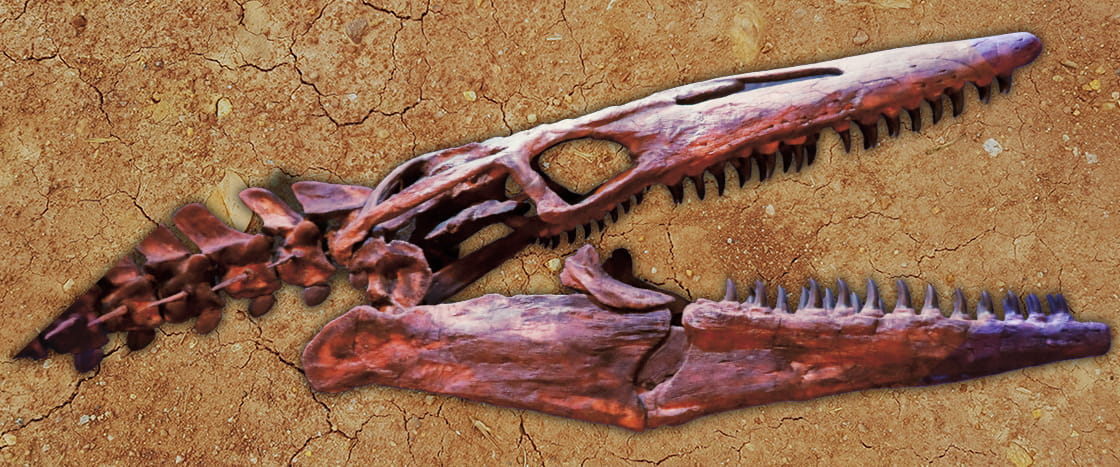Shutterstock.com (Background); Michelle Crawford/Alamy Stock Photo (Skull)
Millions of years ago, a creature called an ichthyosaur (IK-thee-uh-sor) swam in the sea. It had long jaws with sharp teeth. It chomped on fish as it swam.
But one day, it died. Its body sank into the mud at the bottom of the sea.
Over millions of years, its flesh rotted and its bones turned into rock. It became a fossil. A fossil is what is left of animals and plants from many, many years ago.
More changes happened. Its watery home became dry land. Now it was no longer a fossil under the sea. It was a fossil in a cliff.
No one knew it was there. Then a girl named Mary Anning came along.
A creature swam in the sea millions of years ago. It was called an ichthyosaur (IK-thee-uh-sor). It had long jaws and sharp teeth. It ate fish.
But one day, it died. Its body sank into the mud at the bottom of the sea.
Millions of years went by. The flesh rotted. The bones turned into rock. Now the creature was a fossil. A fossil is what is left of animals and plants from many years ago.
More changes happened. The water became dry land. Now the fossil was no longer under the sea. It was in a cliff.
No one knew it was there. Then a girl named Mary Anning found it.
Millions of years ago, a creature called an ichthyosaur (IK-thee-uh-sor) swam in the sea. It had long jaws with sharp teeth and chomped on fish as it swam.
But one day, it died and its body sank into the mud at the bottom of the sea.
Over millions of years, its flesh rotted and its bones turned into rock, becoming a fossil. A fossil is what is left of animals and plants from many, many years ago.
More changes happened—its watery home became dry land. Now the fossil was no longer under the sea, but in a cliff.
No one knew it was there until a girl named Mary Anning came along.

